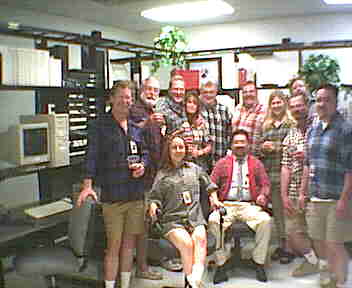
|
| Personal background |
|---|
VeroTek Systems is a bunch of network nerds located in San Diego. In the normal part of our day, we operate networks for large companies in town .... but when the fun and flannel kicks in we love science "stuff".
So, we've taken a half dozen old client computers and racked them up in the setup lab to be dedicated SETI boxes, in the hope of being the outfit to one-up Jodi Foster and actually bring home the evidence (at least more than hours of "erased" tape) :) :)
|
| Thoughts about SETI and SETI@home |
|---|
I'm as sure of it as I can be, without confirming data .... as spoken by a true Sagan/Cosmos fan :)
We probably won't discover it until we can get some longer baseline antenna arrays dedicated to the search and running 7/24/365.
I think the benefit, is in knowing we are not alone .... and the desire that knowledge creates to sail our ship out of the harbor
The danger is that there are probably millions of civilizations out there, and contact might prove fatal if "they" don't recognize us. Idealism would hope a civilization advanced enough to travel would also be non-violent, but there's no evidence to support or refute that premise.
I have always believed that whenever I'm a rookie at something, I should listen for a long time before I open my mouth and prove my rookieism. I don't think we should "rush" the beacon issue until we're a lot smarter. I always respected the work the Voyager team put into their placard, so hopefully any future beacon would have a similar look and feel.
We run SETI@Home 'cause it's fun, provides a sense of participation and hopefully helps.
The project is great .... Bravo Zulu
|
| Your feedback on this profile |
|---|
| Recommend this profile for User of the Day: |
I like this profile |
| Alert administrators to an offensive profile: |
I do not like this profile |
|
|

